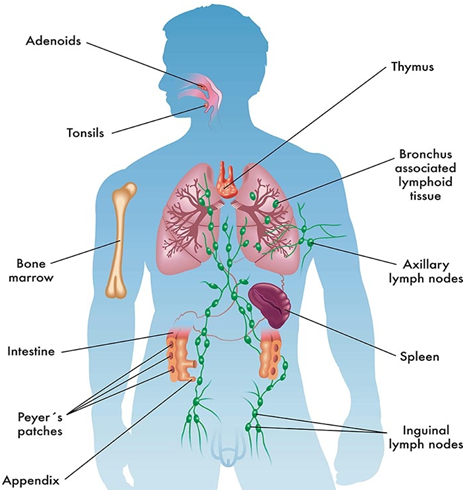Man’s interest in achieving some level of resistance to diseases and their causative agents (i.e. immunity) gave impetus to the study of immunology. The field of immunology actually began when it was observed that people who had earlier suffered and recovered from a particular infection or disease were afterwards discovered to have been protected from that disease. These individuals after contracting, suffered and recovered from certain diseases were no longer susceptible to the same disease or its causative agent upon a second recurrence of the malady.
This singular serendipitous discovery that people were immune to certain diseases after contracting and recovering from it paved the way for the development of this very important discipline of the biomedical sciences, immunology. In 430 BC in Athens, Thucydides (an historian of the Peloponnesian war) discovered during the plague of Athens that only people who had earlier on suffered and recovered from the disease outbreak could care for those suffering from the plague without contracting the disease a second time. Since then, several attempts have been made by man to stimulate an immune state in order to keep pathogenic microorganisms and their causative agents at bay. In particular, the Chinese used a particular technique called variolation to inoculate individuals with dried particles obtained from the smallpox (variola) boils of patients infected with variola.
Variolation is the inoculation of live microorganisms of smallpox obtained from diseased boils or abscess of smallpox infected patients who were recovering from the disease. The dried particles from the smallpox boils were either inhaled or injected into the skin of people, and this technique (variolation) helped to prevent the spread and contraction of smallpox disease as at the time. Edward Jenner in 1798 built on the successes of variolation to establish a relationship between smallpox and cowpox (a milder disease than smallpox, and which affected the udder of cows). Jenner observed that milkmaids who contracted cowpox through their handling of diseased udders of cows were protected from smallpox (a fatal and disfiguring disease), and this led him to postulate that inoculating individuals with particles or fluids from cowpox boils might ultimately protect them from contracting smallpox infection. Edward Jenner’s assumption was confirmed when he immunized an eight year old boy with fluids from cowpox pustules, and later deliberately infected the boy with smallpox after his recovery from cowpox infection.
The eight year boy was immune to smallpox infection as he did not fall sick to the smallpox virus inoculation he received. Though the mechanism of protection from smallpox infection through cowpox inoculation was not understood as at the time, Edward Jenner’s work paved way for the development of vaccination/immunization which is now currently being used in clinical medicine to prevent more deaths, disability and alleviate the sufferings of patients from infectious diseases. Jenner’s work on cowpox/smallpox inoculation clearly established the fact that the human body (immune system in particular) could be stimulated on purpose to produce an immune state that will protect it from specific infectious agents and diseases.
Edward Jenner’s work was taken a little bit further by Louis Pasteur who hypothesized that the weakened or attenuated form of a pathogen (known as vaccine) is capable of establishing an immune state when injected into a host. Louis Pasteur formulated the name vaccine (derived from the Latin word vacca meaning cow) in honour of Edward Jenner’s work on cowpox and smallpox disease. Pasteur went on to develop the rabies vaccine which is used to vaccinate and protect people beaten by rabid dogs.
A handful of vaccines are currently available in the market and many others are being developed still, to provide humans and animals from infectious agents and diseases. With the discovery of phagocytosis and cellular immunity by Elie Metchnikoff and other notable immunological discoveries which further helped scientists to understand immunological concepts, immunology as a field of biomedical science has contributed significantly from time immemorial even till date in alleviating the plights of patients as it relates to infectious diseases.
Currently, the field of immunology has grown from infancy to more robust 21st century techniques which are all geared towards the prevention and eradication of infectious diseases. Though pathogenic microorganisms in their own ingenuity are continuously evolving novel techniques of dodging innate immune attack and vaccination attempts, immunology still holds the potential to contain a whole lot of infectious diseases as it did to smallpox – which was successfully eradicated in 1979 through vaccination programmes. Serology, immunobiology and immunochemistry are other aspects of immunology which are being investigated to ensure improved health condition for man and his animals. In its entirety, the field of immunology has significantly improved the diagnosis and treatment of infectious diseases across the world.
REFERENCES
Abbas A.K, Lichtman A.H and Pillai S (2010). Cellular and Molecular Immunology. Sixth edition. Saunders Elsevier Inc, USA.
Actor J (2014). Introductory Immunology. First edition. Academic Press, USA.
Alberts B, Bray D, Johnson A, Lewis J, Raff M, Roberts K and Walter P (1998). Essential Cell Biology: An Introduction to the Molecular Biology of the Cell. Third edition. Garland Publishing Inc., New York.
Bach F and Sachs D (1987). Transplantation immunology. N. Engl. J. Med. 317(8):402-409.
Barrett J.T (1998). Microbiology and Immunology Concepts. Philadelphia, PA: Lippincott-Raven Publishers. USA.
Jaypal V (2007). Fundamentals of Medical Immunology. First edition. Jaypee Brothers Medical Publishers (P) Ltd, New Delhi, India.
John T.J and Samuel R (2000). Herd Immunity and Herd Effect: New Insights and Definitions. European Journal of Epidemiology, 16:601-606.
Levinson W (2010). Review of Medical Microbiology and Immunology. Twelfth edition. The McGraw-Hill Companies, USA.
Roitt I, Brostoff J and Male D (2001). Immunology. Sixth edition. Harcourt Publishers Limited, Spain.
Zon LI (1995). Developmental biology of hematopoiesis. Blood, 86(8): 2876–91.
Discover more from #1 Microbiology Resource Hub
Subscribe to get the latest posts to your email.



